

In World of Tanks you have several different types of shells to choose from and each provides its own positive and negative attributes you need to take into account while using them. The “standard shells” in World of Tanks are usually armor piercing(AP) and high explosive(HE) shells that will make up most of your load out when you head into battle. These shells are cheap and do the job well enough that you should stick to these for most of your engagements. Then there are “premium shells” which consist of armor piercing composite rigid(APCR), high explosive squash head(HESH), high explosive anti tank(HEAT), and then premium versions of AP/HE rounds. Premium rounds are available for both gold and credits but due to the extremely high cost per shell when compared to standard shells you should only use them when facing opponents that are to strong for your standard rounds. Some tanks do have different ammo set ups and you can find that APCR(tier 10 mediums) could be a standard round in some cases.
This page will outline the differences of all the shells in World of Tanks and when it is best to use each type of shell. If you are curious as to how armor works and how effective armor values are calculated hop over to the “How Armor Works” page linked below.
http://wotguru.com/how-armor-works/
Starting off you need to learn a few basic shell mechanics in World of Tanks and the terms that relate to them.
Normalization refers to a shell hitting an angled piece of armor and it trying to keep its initial shell path although it is hitting something that is not “flat”. When this occurs a shell will lessen the angle at which the armor is angled at and thus lowering its effective armor value(making it easier to penetrate). Since this reduces the armor’s angle it also helps by preventing a shell from ricocheting off of a piece of highly angled armor in some cases. AP shells have a 5° normalization value and APCR have a 2° normalization value. HE, HESH, and HEAT shells do not normalize. Normalization also does not change the shell’s path and the shell if it penetrates spaced armor or any part of a tank will continue on its original path in World of Tanks. To see how normalization changes armor values you can see the normalization section on the “How Armor Works” page linked below.
http://wotguru.com/how-armor-works/
When a shell ricochets it simply bounces off of a piece of armor regardless of the armor’s effective value. This makes armor that is highly angled very effective even if it is not as thick/strong as another piece of armor at a lesser of an angle. The ricochet calculation happens after normalization is taken into account so the angle after normalization is what matters. Shells that ricochet at 70° are AP and APCR shells. HEAT shells ricochet at 80° and HE/HESH shells never ricochet.
Spaced armor refers to multiple layers of armor that overlap with a space between them. Almost all tanks have spaced armor when it comes to the gun mantlet(armor around the gun) and tracks on the tank. Some tanks have additional spaced armor plates primarily on the sides of the tank that can make shooting at those areas deceiving. Tracks on tanks do count as spaced armor but are not effected by normalization and will simply have a static armor value attached to them.
AP/APCR shells penetrate spaced armor and will continue to penetrate as long as they have the penetration to continue doing so. Each layer of spaced armor the AP/APCR shells will normalize(but not change their shell path) and thus making penetrating these areas difficult. HEAT also can penetrate multiple layers of spaced armor like AP/APCR but has heavy penalties for the distance at which it travels after penetrating the first layer of armor. After penetrating the first layer it will “bleed” massive amounts of penetration for any additional distance it covers until it hits the next layer of armor. This penalty makes HEAT shells terrible at penetrating spaced armor(especially wide tracks) since it will simply bleed to much penetration going through multiple layers. Generally HEAT shells will lose 5% of their penetration value for every 10cm it travels after hitting a piece of spaced armor.
HE and HESH shells are different than AP/APCR/HEAT in that they do not penetrate multiple layers of armor. When HE/HESH hits spaced armor it will penetrate if it has enough penetration or explode without penetrating. Even it if penetrates it will detonate before penetrating a second layer of armor thus lowering its damage potential. Once HE/HESH detonates it will spew out “rays” in the direction of the explosion that will find the weakest point of armor and then do damage. Since spaced armor causes the detonation to occur before the shell reaches the hull armor the damage causes to the enemy will either be zero(depending on the splash radius) or very low.
Splash radius refers to HE and HESH shell’s range at which they can do damage after they detonate. Generally the higher the caliber the larger the splash radius. For example a 150mm HE shell will have a larger splash radius than a 50mm HE shell. When a HE/HESH shell hits a solid object(tank or environment) it will then detonate and see if anything is within its splash radius. Anything within that radius that is hit by the “rays” that emit from the shell marker then will take damage according the HE/HESH mechanics.
Module damage refers to damage that occurs to a tank’s module or crew. This happens when a shell’s path comes into contact with an enemy crew member or module on the tank. HE and HESH shells have a higher chance at module damage since when they detonate multiple rays are drawn. Since there are multiple rays compared to a single path in AP/APCR/HEAT shells they can hit multiple modules/crew.
Armor Piercing(AP) shells will most likely be your most used shell unless you play almost all SPGs or use all howitzer guns that work better with high explosive. AP shells are the base or norm of all the shell types since it is your primary round on most tanks and does many things well. AP shells need to penetrate an enemy tank’s armor to do damage and do not have a splash radius like high explosive shells. This means that you will need to hit enemy tanks in spots that your AP shell has enough penetration to go through(weak spots!) or else you do zero damage. AP shells also do less damage per shell when compared against HE and HESH shells but are more reliable since when they penetrate a tank’s armor they will do the average damage of the shell with a + or – 25% variable added in.
AP shells do lose some penetration at medium to long ranges but when compared to APCR shells they lose less penetration at range. AP Shells also “over match” which is when a shell’s caliber with three times or more the armor thickness it is hitting it will simply penetrate regardless of the angle. For example a 150mm shell hits a piece of 50mm armor. This shell will simply penetrate regardless of the angle. AP shells ricochet off at a 70° angle and anything above that(unless it can be over matched) will simply bounce any shots that hit it. The normalization of AP shells is 5° and it will take 5° off of any armor angle it hits and will be taken into account before a shell could ricochet off.
AP is best used in most scenarios compared to other shell types and thus is the “standard” round in World of Tanks. Not only is it cheap but it also is reliable and works in most situations. A situation you would not want to use AP would be when you face an enemy with no available weak spots to hit and your AP shell lacks penetration. Another situation would be when you need to reset an enemy with HE/HESH since it has a good chance at doing 1 HP or more damage without bouncing off. And finally using HE/HESH on tanks with pitiful armor that you can easily penetrate with the lower HE/HESH penetration values will allow you to do more damage than AP.
HE shells are the other “standard round” in World of Tanks since they are cheaper than premium shells and are good for the job they are designed for. For most tanks you will not need many HE shells since most tank’s guns work best with AP shells. Some guns(howitzers) however work best with HE such as SPGs/artillery and guns like the 105mm M4 that can be mounted on the M4 Sherman. Guns like this usually are a higher caliber(larger shell) and have worse accuracy and muzzle velocity than guns designed around AP rounds. HE shells make sense in these guns since the accuracy is not high enough to hit specific weak spots, the shell travels slow, and the non HE shells in these guns do not have enough penetration to reliably face its peers. Regardless, even if you are not using a gun focused around HE you should keep a few for resetting flags and dealing with lightly armored tanks.
HE shells unlike AP shells do not normalize, do not over match, and do not ricochet. HE shells when they come into contact with armor simply go through a penetration test(without normalization) to decide whether it will penetrate or detonate. If it penetrates it will do its full damage potential to the inside of the tank or to the next layer of armor if it hits spaced armor. If it does not penetrate it will loose 50% of its damage potential and then the remaining left over damage will be put up against the armor’s effective value. If the damage potential is higher than the armor’s value it will do that leftover damage and if the damage potential is lower it will do zero damage.
Regardless, when a HE shell detonates it will emit “rays” that are drawn in a 45° arc in the direction of the armor the HE shell has hit. These rays will damage any modules and crew they reach and the ray that hits the weakest point of the armor will do the HP damage to the tank. HE can go through spaced armor however it will only travel a certain distance(splash radius) from the initial shell’s detonation location and it will lose damage for each layer it goes through. HE shells also do not lose penetration when traveling at medium and long ranges.
HE is useful but typically you will only need a few per game unless you are playing artillery or are using a howitzer gun. A situation to use HE would be resetting an enemy capturing your flag since you only need to do 1 HP’s worth of damage and HE will not bounce off. Another would be to use it against an enemy you cannot damage with AP if it is a higher tier or if there are no weak spots showing. And finally if you are encountering an enemy with a very weak piece of armor you can use HE even though it has lower penetration than AP to deal with weak enemies.
APCR shells are almost identical to AP shells with a few differences to make them more effective in some situations and worse in others. APCR shells have more penetration when compared to their AP counterpart on a gun which makes them more effective at dealing with tougher tanks. However, APCR shells only normalize 2° which causes them to ricochet at a lower angle than AP and also by losing 3° of normalization makes an armor’s effective value higher. APCR also loses more penetration at medium to long range when compared against AP shells and also cost a hell of a lot more than standard shells since it is a premium shell.
The shell velocity of APCR is higher than AP which makes hitting moving targets much easier as well. For tanks that have APCR as their standard shell(mainly tier 10 mediums) they do not have the penetration loss at range and penetration will degrade over range like AP does. You should only use APCR when you encounter an enemy that your AP or HE shell cannot handle since it is very expensive. Also, keep in mind that shooting at highly angled armor will mean that with only 2° of normalization it will be tougher sometimes than using AP with 5° of normalization.
HESH shells function the same as HE shells currently in World of Tanks although in reality they would no do so. The main difference of HESH shells is that they have a higher penetration value than normal HE shells. This allows them to use their higher damage potential more effectively since their penetration is closer to an AP shell’s penetration value. The downside is that it still is useless against spaced armor/thick armor like HE and also is very expensive to use if it is a premium round. Some British heavy tanks have HESH shells instead of a HE option and do not have the higher cost compared to HE.
HEAT shells function similar to AP shells with a few important differences that were covered in the normalization and spaced armor sections of this guide. HEAT shells do not normalize which means that the armor’s effective values will always be tougher to go through. However, HEAT does gain a nice boost to its penetration value to offset this. HEAT also does not ricochet at 70° but rather at 80° which means it can penetrate some highly angled armor that AP/APCR cannot. Like HE/HESH HEAT also does not lose any penetration at range which is a nice positive when you are fighting at long range.
The main downside aside from the high price of HEAT comes with spaced armor. As explained in the spaced armor section above HEAT can penetrate multiple layers of armor like AP/APCR but it has a massive penalty for doing so. For every 10cm a HEAT shell travels after the initial armor layer it will loose roughly 5% of its penetration value. This makes hitting tracks, mantlets, or other spaced armor sections on a tank a very bad choice for someone using HEAT. While you can damage spaced armor sections it is very difficult in most situations and your shell will simply be wasted.
Since HEAT is expensive and has the huge spaced armor downside you will only want to use it against very strong armor that your AP shell would not be able to handle. You also have to factor in whether or not you can hit that piece of armor without hitting any type of spaced armor.
Some tanks have premium versions of AP and HE shells. These shells function the same as their standard shell types as far as mechanics go. Premium AP shells will gain more penetration and premium HE shells will gain additional splash radius in most cases. Since they cost higher you should use them sparingly in key moments if you cannot afford to use them more often.
Hopefully this World of Tanks shell mechanics guide has helped you understand the differences between shells in World of Tanks. If any changes occur in future updates this page will be updated to reflect them.
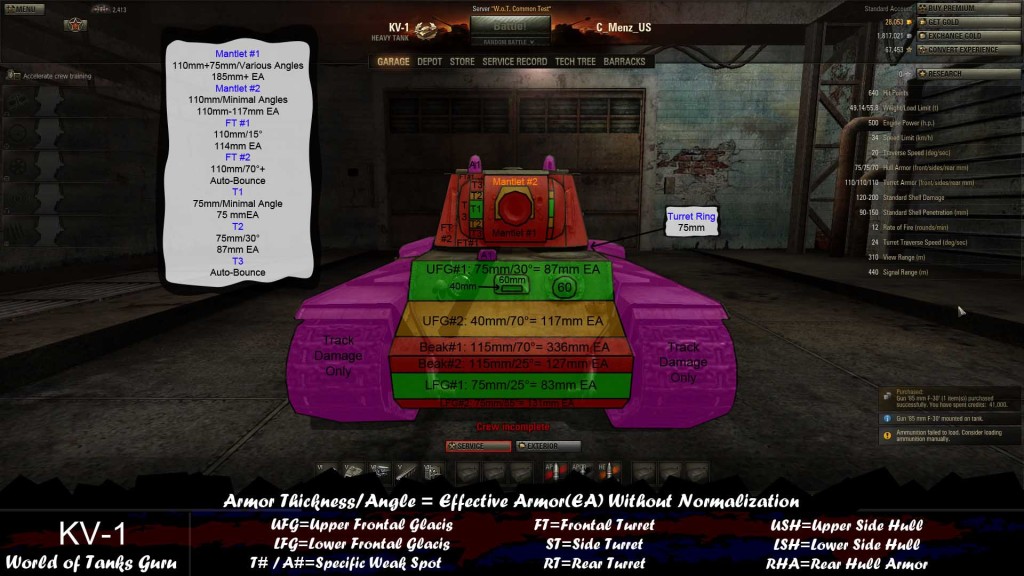
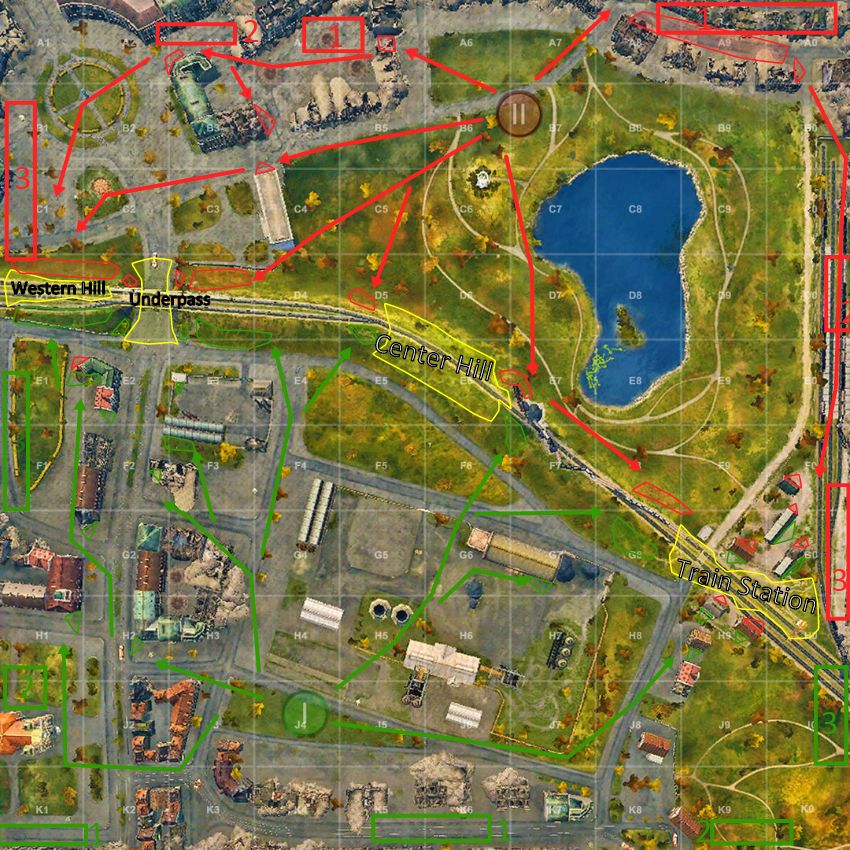
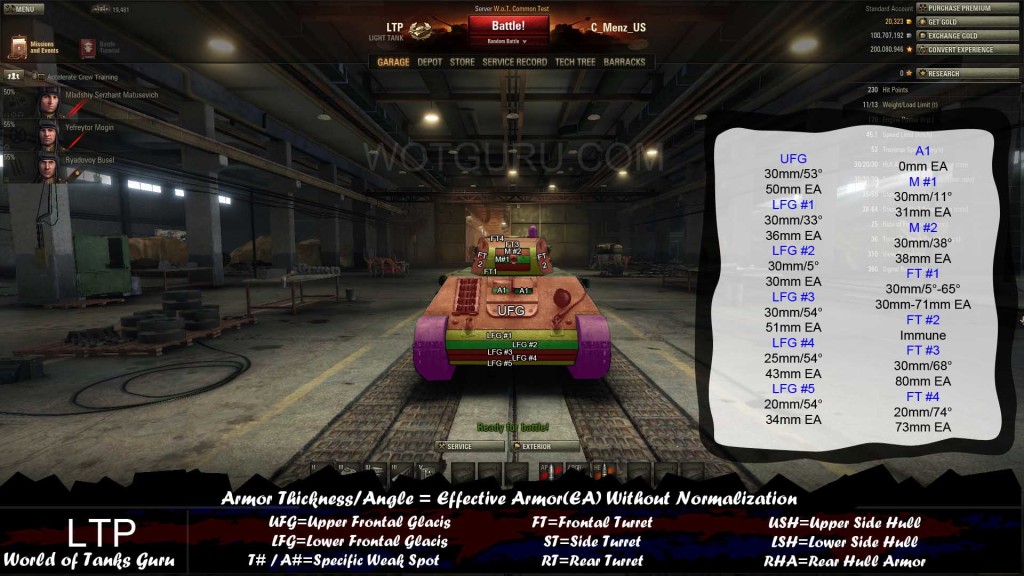
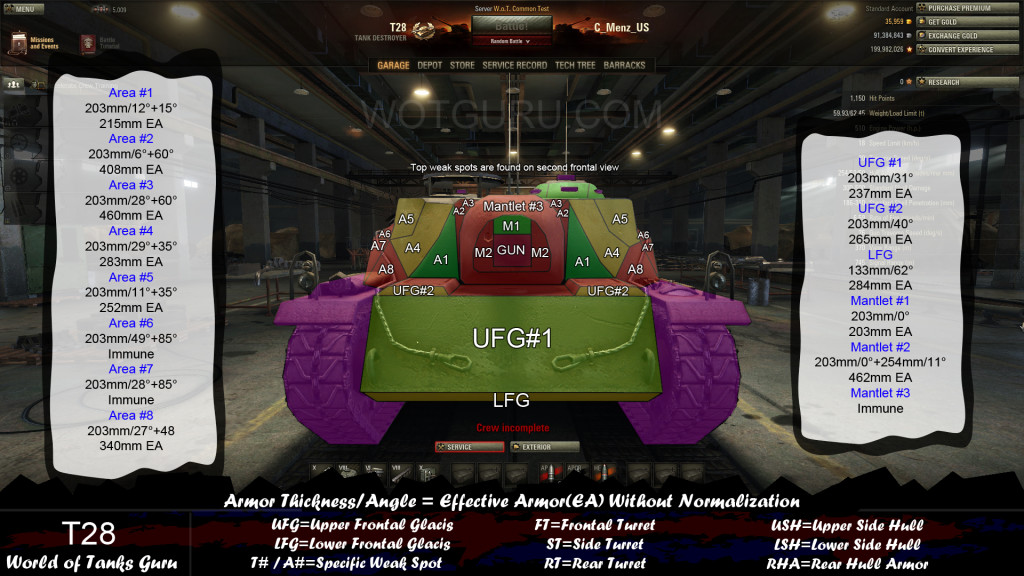
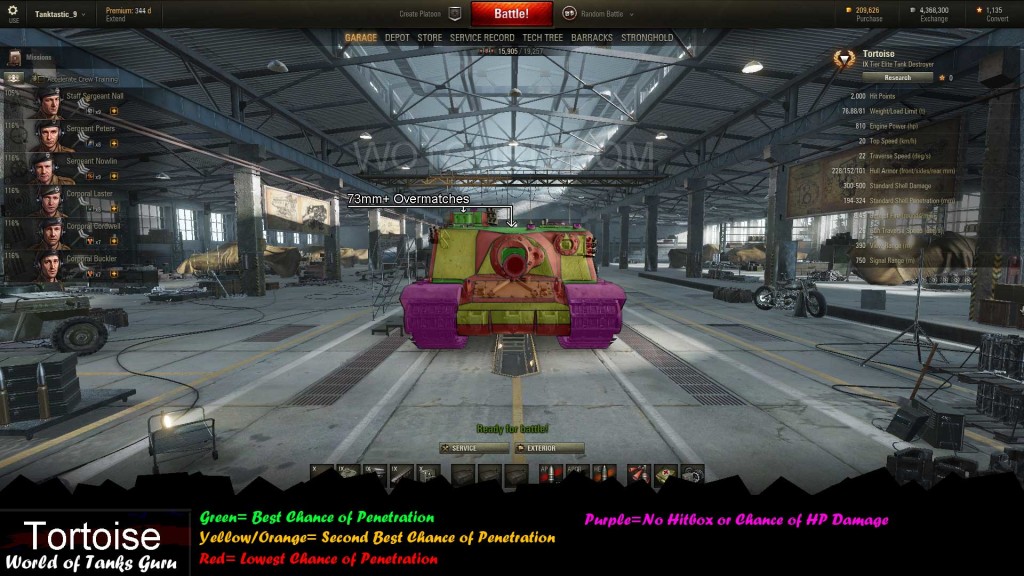 Weak Spot Guide: Tortoise - World of Tanks Guru
Weak Spot Guide: Tortoise - World of Tanks Guru World of Tanks Guide – Hetzer
World of Tanks Guide – Hetzer Weak Spot Guide: PzKpfw 38 (t) - World of Tanks
Weak Spot Guide: PzKpfw 38 (t) - World of Tanks Weak Spot Guide: PzKpfw VI Tiger (P) - World of Tanks Guru
Weak Spot Guide: PzKpfw VI Tiger (P) - World of Tanks Guru Weak Spot Guide: Jagdtiger - World of Tanks Guru
Weak Spot Guide: Jagdtiger - World of Tanks Guru